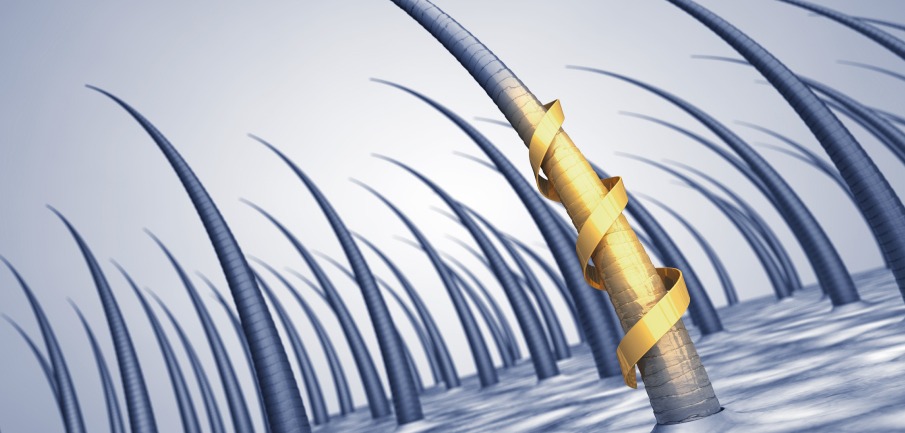Table Of Content

This means that hair cloning could potentially provide an unlimited supply of hair follicles for transplantation, making it a promising solution for patients with extensive hair loss. However, with the ideas behind hair cloning (if we can fully figure it out), your exact hair follicle stem stems may be able to replicate themselves indefinitely. This may open up the possibility of hair procedures to men who have very little hair left on the back of the head to transfer, or for women who tend to develop an all-over-thinning type of hair loss.

How much will hair cloning cost?
"The history of hair transplantation is not much different than that of cardiac surgery," he says. "First there was the coronary bypass surgery and hundreds then thousands of doctors started doing them and pretty soon the operation evolves and moves forward," he says. Stimulate growth safely and comfortably with FDA-PROVEN (LLLT) LASER THERAPY CAP. Hair Transplant Surgeon, Dr. Vikram Jayaprakash and Dermatologist, Dr. Russell Knudsen speak about how hair loss happens and why a laser cap is their preferred laser hair therapy device to help restore hair growth.
Surgical Options
“You can see a beautiful architecture, although why they grow inside out is a big question,” says Koehler. You won’t be able to drive yourself home following the procedure because of the effects of the local anesthesia. This new research has wide-ranging implications for contributing to our continued understanding of the processes behind hair generation. “Rare side effects of finasteride include erectile dysfunction and decreased sex drive.
How hair loss treatments are determined
While hair cloning is still in its experimental stages, the researchers and companies working on this technology are taking safety very seriously. They are conducting rigorous testing and trials to ensure the safety and effectiveness of the procedure. However, as with any medical procedure, there will be some risks, which will need to be thoroughly understood before the procedure becomes widely available. In the next section, we’ll discuss the potential side effects and safety of hair cloning. If you’re concerned about the safety of this promising treatment, [continue reading](#Potential Side Effects and Safety of Hair Cloning).
Stem cell therapy for hair loss is very new and no or little published literature exists confirming its efficacy. Scalp micropigmentation (SMP) is a non-surgical cosmetic procedure that involves depositing pigments into the scalp to simulate the appearance of hair follicles. This technique creates the illusion of a closely-shaved head or adds density to thinning areas. SMP is an excellent option for individuals who prefer a buzz-cut hairstyle or want to camouflage balding or thinning areas on the scalp. FUE (Follicular Unit Extraction) hair transplant is a highly sought-after surgical procedure for hair restoration. During an FUE transplant, individual hair follicles are extracted from a donor area, typically the back or sides of the scalp, and meticulously implanted into the recipient area.
Always stay informed and make decisions based on the most accurate and up-to-date information. As with any medical procedure, it’s important to consider the potential side effects and safety of hair cloning. While the technology is still in its experimental stages, let’s discuss what we know so far. It can have a significant impact on an individual’s self-esteem and overall quality of life.
MIT Technology Review
Hair Transplant in Turkey: Hair or Hoax? - USA TODAY
Hair Transplant in Turkey: Hair or Hoax?.
Posted: Sun, 21 Apr 2024 07:00:00 GMT [source]
Kemp is the co-founder and chief executive officer of HairClone, a company that is developing an experimental cell therapy treatment for male pattern baldness and whose tagline is “making hair loss history”. California Hair MD is a boutique practice with a focus on individualized patient care. We intentionally keep our practice small to enable us to provide each patient with a personalized treatment experience. We want our patients to play an active role in their care and have access to our doctors.

Going bald? Lab-grown hair cells could be on the way
Hair multiplication, on the other hand, is when a hair follicle is removed and cut into multiple pieces, which are then transplanted into the patient’s thinning areas. The hope is that the germinative stem cells at the base of the hair that are still attached when the hair is removed will help generate a new follicle. One of the main concerns with hair cloning is ensuring that the cloned hair follicles can integrate properly with the patient’s scalp and produce healthy, natural-looking hair. If the cloned follicles do not integrate properly, it could result in unnatural hair growth patterns or poor hair quality.
If you’re struggling with hair loss and looking for a solution now, there are both surgical and non-surgical treatments available today. There are two innovations getting buzz on the cusp of finishing clinical trials overseas. First, there's a drug called FOL-005 that's being developed for men by the biotech company Follicum. It features osteopontin, a protein in hair which may stimulate or inhibit hair growth, depending on the derivative (Follicum claims to have isolated a stimulating one). It has been studied in injections and is now being looked at in topical form.
Everything You Need to Know About Getting a Hair Transplant - Robb Report
Everything You Need to Know About Getting a Hair Transplant.
Posted: Tue, 23 Apr 2024 15:00:16 GMT [source]
Under Dr. Chaffoo's guidance and expertise, our center has become the premier facility for hair transplantation and hair restoration in California and the U.S. In addition to his plastic surgery specialty, Dr. Chaffoo has mastered the latest techniques in surgical hair restoration, including FUE hair transplantation, NeoGraft®, and ARTAS® robotic hair restoration. With NeoGraft hair restoration, our patients can enjoy a minimally invasive hair transplantation procedure with no stitches and no long, linear scar.
Today's options for hair growth have gone through a major evolution since 1952 when hair transplantation surgery was first pioneered. For more information on hair loss and treatments, continue exploring our website. You might find our article on how to reverse male pattern baldness naturally particularly interesting. Another concern is the potential for adverse reactions to the procedure. As with any medical procedure, there’s always a risk of infection, inflammation, or allergic reactions.
Hair cloning, also known as hair multiplication, is a cutting-edge technology that promises to revolutionize the field of hair restoration. It involves extracting healthy hair follicles from a patient, multiplying them in a lab, and then implanting them back into the patient’s scalp. This innovative procedure has the potential to provide a permanent solution to hair loss, making it a beacon of hope for those struggling with baldness. While these advancements are exciting, it’s important to note that hair cloning is still in the experimental stages. The process of cloning hair follicles and ensuring that they can produce healthy, natural-looking hair is complex and still being perfected.
However, since hair cloning involves using the patient’s own cells, the risk of rejection or allergic reactions is expected to be low. For instance, hair replacement systems offer a non-surgical solution for those seeking immediate results. Basically, it’s still early days for this potential hair loss treatment. The closest we have come currently is through a company called Stemson Therapeutics in 2019, when they released information about the successful growth of human hairs from implanted dermal papilla cells in mice. Among mammals, hair follicles are typically produced in embryos as a result of interactions between skin cells and connective tissue. Koehler’s lab makes hair shafts in an entirely different way—by growing organoids.
Exosome cell therapies can be an option for both men and women who want to avoid surgery and or who are not a candidate for hair restoration. Follicular Unit Extraction (FUE) is a minimally invasive method that removes hair follicles individually rather than in entire strips of the scalp. We utilize the full spectrum of FUE technologies at California Hair, MD, and will recommend the FUE method or combination of techniques that most suitably aligns with your needs. As mentioned, this combines elements of a classic hair transplant with stem cell regeneration. Just last year, Hairclone launched the world’s first-ever hair follicle bank.
Return to work and life sooner with a natural-looking and full hairline. Stem cell therapy is the process of isolating adult stem cells from abdominal fat and reintroducing them into the body where they can do the most good. The process begins with extracting a few ounces of fat from the patient in a “mini” liposuction procedure. To learn more about your hair restoration options and the average hair transplant timeline, The Complete Book on Hair Restoration, to see how great your hair can look. If you’re ready to do something about that bald spot or thinning hair now, schedule a FREE in-person or video consultation with a trained Bosley hair restoration specialist.

No comments:
Post a Comment